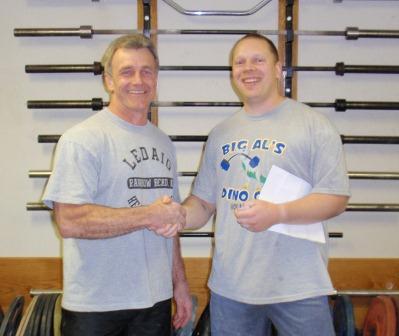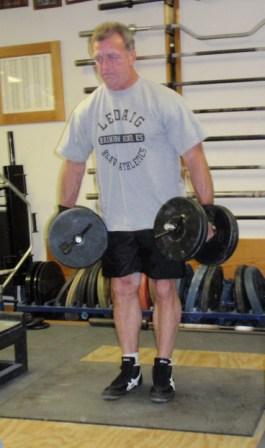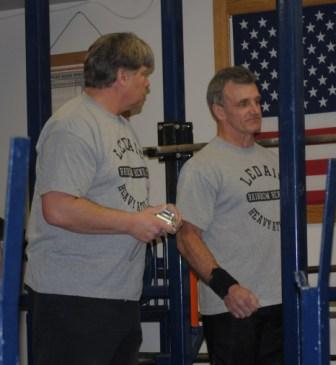The things I hate about the sport I love – part 2
by Larry Traub
Part two – I’m OK, You’re OK, We’re all champions
At the time I started my teaching career in 1976, a book that had been on the best seller list a few years earlier seemed to be having a huge impact on our interaction with the students we taught. The book was called “I’m OK, You’re Ok.” Let me give you my perception of how things started to changed in the 70’s due to the concepts expressed in this book. The basic concept, as I see it, is that our students should constantly be praised for what they do. The effort involved, or the excellence of the accomplishment should not be a factor in whom we seek to reward. If everyone is praised and rewarded for everything they do then they will develop high self-esteem which is the key to them becoming wonderful, fully functional adults. This may be an exaggeration of the concepts expressed in this book but I feel that there is quite a bit of truth in my analysis.
The big example that clearly shows that this trend has survived and is thriving is in youth sports. My niece and nephew are in soccer leagues where no teams are recognized as being better than the other, but every kid who shows up for the last game is awarded a trophy for this amazing accomplishment. Hollywood has definitely taken notice of this development in kid’s sports. For all you “Every One Loves Raymond” fans there are several episodes that poke fun at this trend, but one of my favorite lines occurs when the basketball coach of Raymond’s two young twin boys helps Raymond understand this concept. He explains to Raymond that, “A ball that misses the basket is just as valid as one that goes through the basket.”
I think I can concede the need for sports at a very young age to be more recreational than competitive, but I have to question whether it is wrong to start teaching and rewarding excellence at an early age. And the bigger question in my mind is: At what point should you really have to achieve excellence before you are recognized as a champion?
This trend of making sure that everyone feels like a champion goes well beyond youth sports and I suspect that the motivation has more to do with money than self esteem. I did some research to make my point relevant to the sport of powerlifting. I started looking through issues of Powerlifting USA and I discovered that for the year 2007 I could find 11 of the 12 issues. So the following research is based on carefully combing through every 2007 issue of Powerlifting USA except February. I found that the following totals were good enough to make someone a “National Champion” in 2007. These all came from the open men’s competition, not the master’s or teenage. This was compiled from whatever organization that claimed to have a “National Championship”. These totals are all in pounds and they are all totals from a combined squat, bench and deadlift where the competitor had successfully completed at least one attempt in all three lifts. (No bomb outs.) Some of the meets were raw and some of them were drug tested, but I didn’t bother to distinguish between the different rules governing the meet.
Here are your 2007 National Championship Totals. The names have been withheld to protect the unworthy.
| Weight Class | Total | Weight Class | Total |
| 123 | 688 | 220 | 959 |
| 132 | 881 | 242 | 1229 |
| 148 | 986 | 275 | 1550 |
| 165 | 1046 | 308 | 1197 |
| 181 | 804 | Hwt | 1758 |
| 198 | 837 |
I found a national championship where only 2 weight classes had entries in the open division, which meant that anyone who showed up for this one could have won a national championship unopposed, provided they weren’t in the 181 or 220 lb division. I also found a National championship (and this is my favorite) where there were so many different divisions that 70 different national championship awards were given out. (Many lifters were multiple national champions.) In this same meet 5 people received second place awards. No thirds. No fourths. There were only 5 people on the whole meet who got beat by somebody. I am, of course, concerned about the deflated self esteem of these 5 individuals, and suspect they will require therapy to get over the humiliation of being a national runner-up.
Part of the reason that I have chosen the USAPowerlifting (USAPL) as my venue for competition is that they seem to attract the best competitors. (At least among those who would submit to drug testing.) I believe a big reason for this is their affiliation with the International Powerlifting Federation (IPF) which gives lifters an opportunity to compete in true international competition. I really think that the IPF is doing the best job of holding the line on creating meaningful championships. Their championships include subjuniors, juniors, open, 40-49, 50-59, and 60+. Compare this to the usual laundry list of, youth, 14-15, 16-17, 18-19, juniors, collegiate, open, military, sub masters, masters, 40-44, 45-49, with continued 5 year increments through infinity. I understand every organization wants to succeed, and giving people what they want is paramount to the success of that organization, but surely we can see that this is killing the legitimacy of our sport.
Do I have the solution to the problem? I think I have some ideas that could minimize this trend that, in my mind, is killing our sport. As mentioned in a previous article I recently competed in the USAPL raw Nationals. I found the experience enjoyable but there were many unopposed national champions which is not typical of the USAPL. I hated to see the all the meaningless national championships in a contest that was overall very competitive. I understand that it is all part of the growing pains of starting something new, but I think there are creative alternatives that would allow you to recognize outstanding individuals in other divisions (masters, teenage, etc) without creating meaningless awards. The raw nationals had no qualifying total which means that it could attract lifters from 14 yrs old to 100. This is my recommendation for USAPL Raw Nationals. First, let everyone enter in their appropriate weight class and compete against whoever is there, no matter if they are open, teens, masters, etc. I think that a 17 year old who can finish in the top 6 or 7 of this type of contest would have more pride in his accomplishment that being an unopposed national champion. Second, Have an All American team consisting of the top ten lifters on formula including the use of age coefficients. The 17 year old, who finished 6th in his weight class could conceivably, using this formula, become one of the top 5 lifters in the whole contest and his All American status would be an appropriate recognition of his accomplishments.
This format would also make this contest more conducive to a true team championship. With this scenario, a gym or club would make an effort to get the best person they could into every weight class regardless of the age of the individual, and there would be far less choosing of team members simply because there is little or no competition.
This would be my recommendation for the raw nationals, but the same or a similar format would be applicable to a lot of other competitions. There could even be a female coefficient that could allow you to group males and females together for outstanding lifter awards or all state/American awards.
If athletes really want meaningless championships then I suppose there will always be promoters that will provide them, especially if there is a buck to be made doing so. I’m not so sure that this is always the case. I think that a lot of lifters and promoters are seeing problems with the sport of powerlifting and are starting their own organizations so they can create their own solutions to this problem. In my opinion, time would be better spent trying to bring reform to the organizations we have. For instance instead of starting a raw powerlifing organization, help the USAPL develop their raw nationals into a true championship for all lifters who want to lift unequipped and without performance enhancing drugs. This could lead to a true raw world championship, and who knows, with less fragmentation of the sport, maybe we could be taken seriously enough to someday become an Olympic sport.
One of the most enjoyable contests that I can remember competing in was at a local prison some 25 years ago. There were 15-20 lifters involved and for most of them it was a home meet, if you get my drift. The competition really wasn’t that good but there was another local lifter who, like myself, got to leave when it was over, and was considered to be quite good. He was a 148 lber and I was at 220 and the whole contest was based on formula which made it quite interesting. I did come out on top, which may be why I recall it fondly, but either way the use of the formula as opposed to weight classes made it a real competition. I would hope that we, as powerlifters, are seeking out real competition and not just looking to gain some meaningless status.




